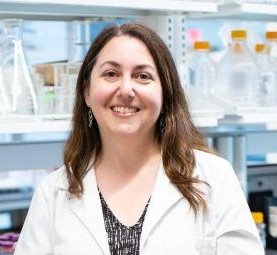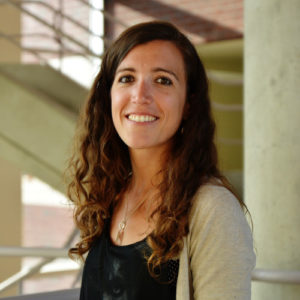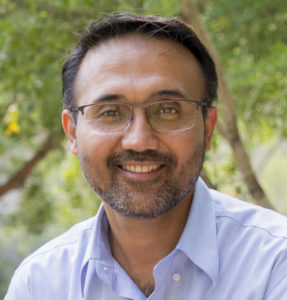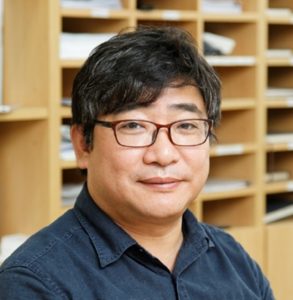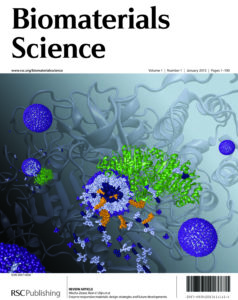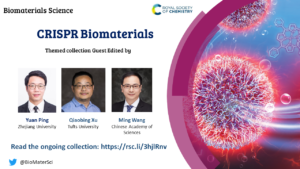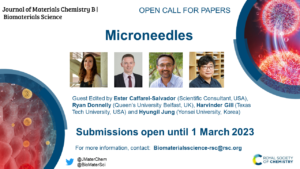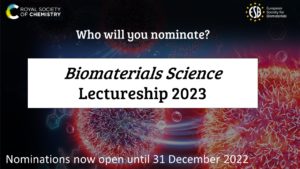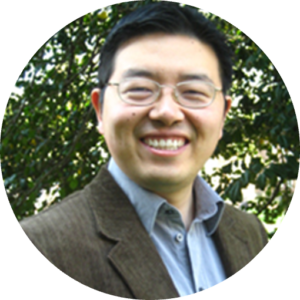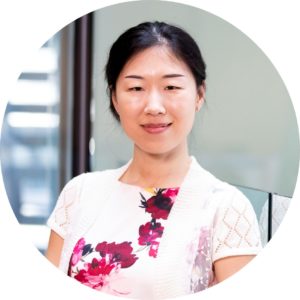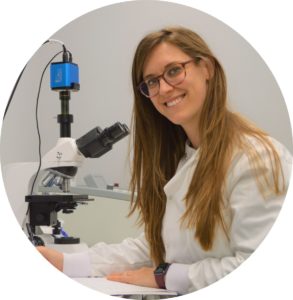| Katelyn Swindle-Reilly, PhD, received a BS in Chemical Engineering from Georgia Institute of Technology, and MS in Chemical Engineering and PhD in Energy, Environmental, and Chemical Engineering from Washington University in St. Louis. She completed postdoctoral training in Biomedical Engineering (BME) at Saint Louis University. She then worked in industry as a Senior Scientist at Rochal Industries. She concurrently held an Adjunct appointment in BME at The University of Texas at San Antonio. She joined The Ohio State University (OSU) as Assistant Professor in BME and Chemical and Biomolecular Engineering (CBE) in 2016. She has a courtesy appointment in Ophthalmology and Visual Sciences.
Dr. Swindle-Reilly’s research focuses on the design of polymeric biomaterials for soft tissue repair and drug delivery with focused applications in ophthalmology. Since 2020, she has also been serving as Chief Technology Officer of Vitranu, Inc., a startup that licensed ocular drug delivery technologies her lab developed at OSU. Professional recognitions have included the Controlled Release Society (CRS) Ocular Delivery Focus Group (OcD) Young Investigator Award, selection as an Emerging Vision Scientist by NAEVR, OSU Early Career Innovator of the Year, OSU College of Engineering Innovators Award, and the Ohio Lions Eye Research Foundation Lois Hagelberger-Huebner Young Investigator Award. Her teaching and mentoring incorporates entrepreneurial minded learning (EML). Dr. Swindle-Reilly is interested in promoting entrepreneurialism and STEM careers, particularly to female students, and is actively involved with programming that supports these interests. Find out more about Katelyn’s research on her webpage Follow Katelyn on Twitter @SwindleReilly and LinkedIn |
Read Katelyn’s Emerging Investigator article, ‘Sustained release of heme–albumin as a potential novel therapeutic approach for age-related macular degeneration’, DOI: 10.1039/D2BM00905F
Check out our interview with Katelyn below:
1. How do you feel about Biomaterials Science as a place to publish research on this topic?
Biomaterials Science is an excellent biomaterials journal, and was therefore a great place to publish our interdisciplinary work exploring new protein therapeutics and delivery from polydopamine nanoparticles.
2. What aspect of your work are you most excited about at the moment and what do you find most challenging about your research?
I am really excited about recent collaborations that have developed. This will enable us to explore new therapeutic approaches for treatments of several ocular diseases.
3. In your opinion, what are the most important questions to be asked/answered in this field of research?
There have been many recent significant advances and there are new and emerging treatments for vision-threatening conditions, but there is still a lot that remains unknown about the eye. For example, age-related macular degeneration appears to have many root causes, and more is being discovered by basic scientists and clinicians. In order to advance treatments for these patients, it is important to work with a diverse team that is investigating mechanisms behind a disease, clinicians treating the condition, and translational scientists/engineers.
4. Can you share one piece of career-related advice or wisdom with other early career scientists?
Believe in yourself and your abilities, know your worth, and persist through failure. It is not easy to establish your own program, and research is riddled with obstacles. I took a less traditional path to my academic career, which caused additional challenges, but ultimately my different perspective and persistence enabled my work.


